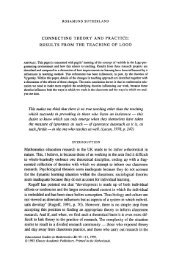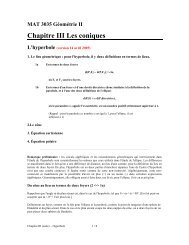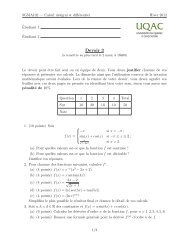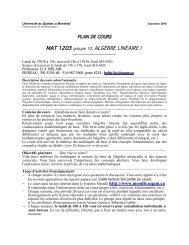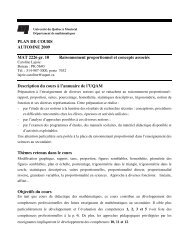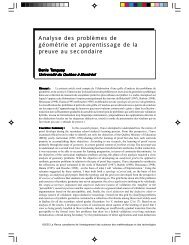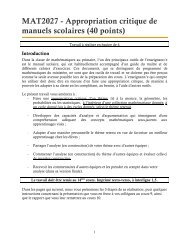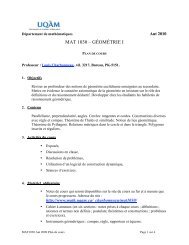COMPLEX GEOMETRY Course notes
COMPLEX GEOMETRY Course notes
COMPLEX GEOMETRY Course notes
You also want an ePaper? Increase the reach of your titles
YUMPU automatically turns print PDFs into web optimized ePapers that Google loves.
Claim 2.15.3. For every α ∈ N 2 , we have<br />
D α (ρ ɛ ∗ ρ) = ρ ɛ ∗ (D α f)<br />
This result follows similarly applying a change of variables z ↦→ z + ɛ.<br />
Claim 2.15.4. If z ∈ U (ɛ) and f is harmonic on D(z, ɛ), then<br />
(ρ ɛ ∗ f)(z) = f(z).<br />
Proof:<br />
∫<br />
(ρ ɛ ∗ f)(z) = ρ ɛ (ɛ)f(z + ɛ)dVol(ɛ) =<br />
∫ 2π ∫ ɛ<br />
ρ ɛ (r)f(z + rɛ iθ )rdrdθ = 2πf(z)<br />
D(0,z)<br />
0 0<br />
0<br />
∫ ɛ<br />
ρ ɛ (r)rdr = f(z).<br />
Proof of Weyl’s Lemma: Since ɛ −→ ρ ɛ (ɛ − z) has compact support in U, for every z ∈ U (ɛ) ,<br />
h(z) := T ɛ [ρ ɛ (ɛ − z)]<br />
is defined and belongs to A 0 (U (ɛ) ) by Claim 6.2. By Claim 6.4, it suffices to show that for every<br />
f ∈ A 0 c(U (ɛ) ) we have<br />
∫<br />
T [f] = hf,<br />
U (ɛ)<br />
where h is harmonic since<br />
∆h = T ɛ [∆ z ρ ɛ (ɛ − z)] = ∆T ɛ [ρ(ɛ − z)] = 0.<br />
We want to show that T = T h . We have<br />
Hence it suffices to show<br />
∫<br />
T [ρ ɛ ∗ f] = hf.<br />
U (ɛ)<br />
T [f] = T [ρ ɛ ∗ f].<br />
By Claim 6.1, there exists ψ ∈ A 0 such that ∆ψ = f, where ψ is harmonic on V = C − supp(f). Hence<br />
ψ = ρ ɛ ∗ ψ on V ɛ by Claim 6.4. Therefore, O = ψ − ρ ɛ ∗ ρ ∈ A 0 c(U) satisfies<br />
since ∆T = 0, and T (∆ψ) = 0. Hence<br />
∆O = ∆ψ − ρ ɛ ∗ ∆ψ = f − ρ ∗ f<br />
T [f] = T [ρ ∗ f + ∆O] = T [ρ ɛ ∗ f].<br />
38



